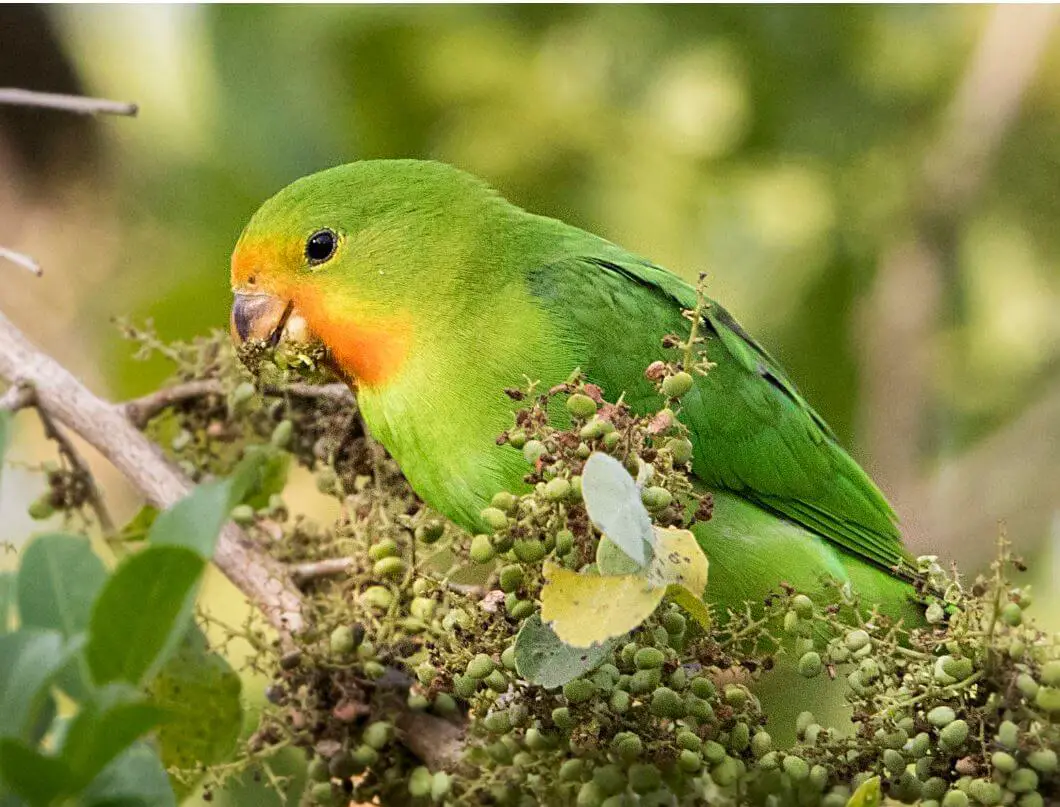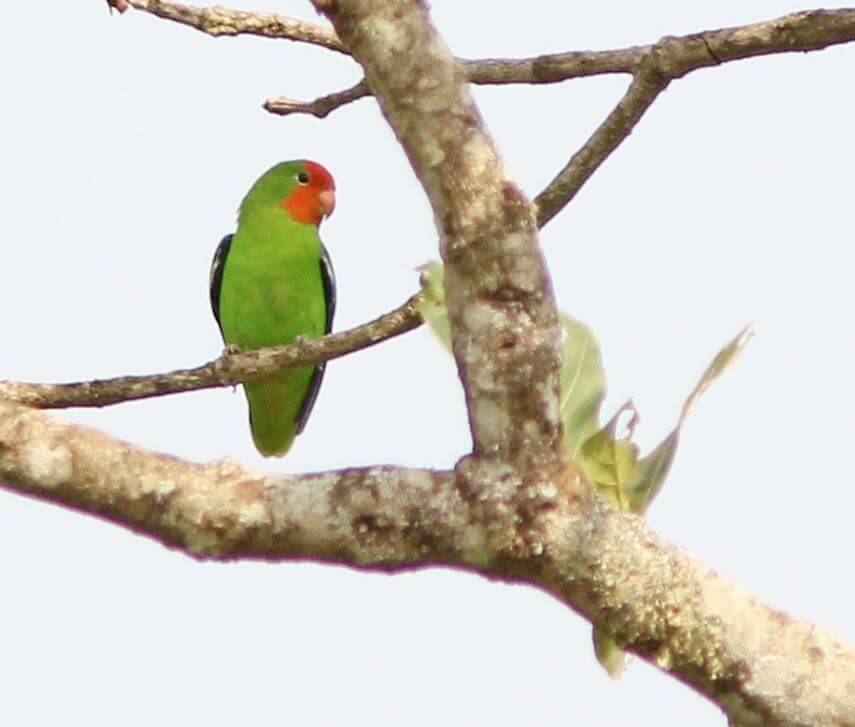
Systematics History
Editor’s Note: This article requires further editing work to merge existing content into the appropriate Subspecies sections. Please bear with us while this update takes place.
Described race guineensis (from W Africa) is a synonym of nominate. Two subspecies were recognized.
Subspecies

Agapornis pullarius pullarius Scientific name definitions
Distribution
Agapornis pullarius ugandae Scientific name definitions
Distribution
Distribution
Editor’s Note: Additional distribution information for this taxon can be found in the ‘Subspecies’ article above. In the future, we will develop a range-wide distribution article.
Habitat
Mixed savanna woodland, light orchard bush, isolated patches of heavier woodland and subtropical humid primary and secondary forest and forest edge, riverine bushland, riparian forest, around inselbergs in savanna, and near areas of cultivation and pasture; mostly lowlands, but in E of range up to 2000 m.
Movement
Some populations are sedentary, but others seem to behave as short-distance migrants, and all are perhaps capable of some nomadism. Considered to be a visitor of unclear seasonal status, Kagoro, Nigeria.
Diet and Foraging
Red-headed Lovebird Seeds of tall grasses, including Sorghum, taken from the ground, also fruits of guavas and figs.

Sounds and Vocal Behavior
The commonest vocalization of Red-headed Lovebird is a high-pitched tinkling double-noted “ti-lee”. When perched, several chirruping and twittering calls, and a more screeching “scree-teet”.
Red-Headed lovebirds | super quality love birds | African birds |
SOURCE: shivam mishra
Breeding
Nestlings and juveniles in Oct in Nigeria; Sept in Sierra Leone; Apr–Aug, and Oct in Uganda and E Zaire. In Freetown area of Sierra Leone, appears to nest invariably in ant-nests in trees;
said to the nest where there are arboreal ant-nests in Sudan; one Red-headed Lovebird nest in Nigeria was in a hole in occupied ant-nest attached to the bole of a tree 4 m up; in termitaria in Uganda, once lined with grass.
SOURCE: Nelson Cruz
Red-headed Lovebird Eggs 3–7, white, size 20·9–21·9 mm × 16·6–17·5 mm; in captivity, incubation by female 22 days, nestling period 42 days.
Conservation Status
Not globally threatened. CITES II. Generally rather uncommon, and never reported as abundant except locally in Ethiopia.





















